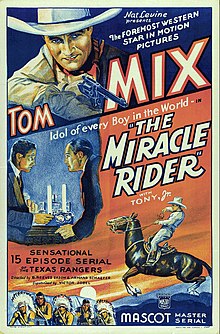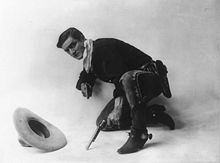
Thomas Edwin Mix was an American film actor and the star of many early Western films between 1909 and 1935. He appeared in 291 films, all but nine of which were silent films. He was one of Hollywood's first Western stars and helped define the genre as it emerged in the early days of the cinema.
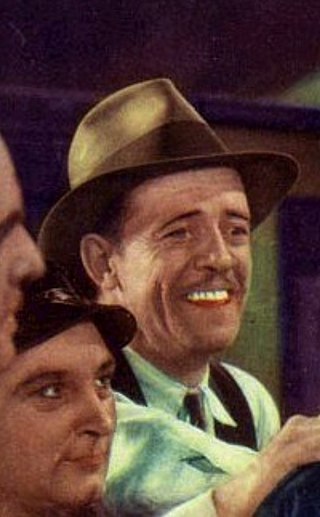
Tom London was an American actor who played frequently in B-Westerns. According to The Guinness Book of Movie Records, London is credited with appearing in the most films in the history of Hollywood, according to the 2001 book Film Facts, which says that the performer who played in the most films was "Tom London, who made his first of over 2,000 appearances in The Great Train Robbery, 1903. He used his birth name in films until 1924.

Tom Tyler was an American actor known for his leading roles in low-budget Western films in the silent and sound eras, and for his portrayal of superhero Captain Marvel in the 1941 serial film The Adventures of Captain Marvel. Tyler also played Kharis in 1940's The Mummy's Hand, a popular Universal Studios monster film.
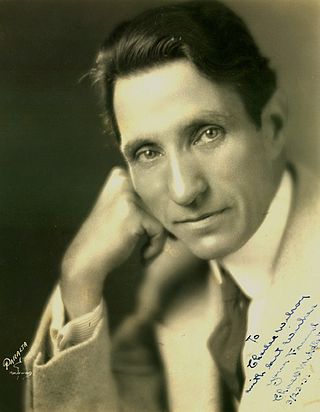
Charles Brown Middleton was an American stage and film actor. During a film career that began at age 46 and lasted almost 30 years, he appeared in nearly 200 films as well as numerous plays. Sometimes credited as Charles B. Middleton, he is perhaps best remembered for his role as the villainous emperor Ming the Merciless in the three Flash Gordon serials made between 1936 and 1940.

The Phantom Empire is a 1935 American Western serial film directed by Otto Brower and B. Reeves Eason and starring Gene Autry, Frankie Darro, and Betsy King Ross. This 12-chapter Mascot Pictures serial combined the Western, musical and science-fiction genres. The duration of the first episode is 30 minutes, while that of the rest is about 20 minutes. The serial film is about a singing cowboy who stumbles upon an ancient subterranean civilization living beneath his own ranch that becomes corrupted by unscrupulous greedy speculators from the surface. In 1940, a 70-minute feature film edited from the serial was released under the titles Radio Ranch or Men with Steel Faces. This was Gene Autry's first starring role, playing himself as a singing cowboy. It is considered to be the first science-fiction Western.

Alfred Morton Bridge was an American character actor who played mostly small roles in over 270 films between 1931 and 1954. Bridge's persona was an unpleasant, gravel-voiced man with an untidy moustache. Sometimes credited as Alan Bridge, and frequently not credited onscreen at all, he appeared in many Westerns, especially in the Hopalong Cassidy series, where he played crooked sheriffs and henchmen.

Ray "Crash" Corrigan was an American actor most famous for appearing in many B-Western movies. He also was a stuntman and frequently acted as silver screen gorillas using his own gorilla costumes.
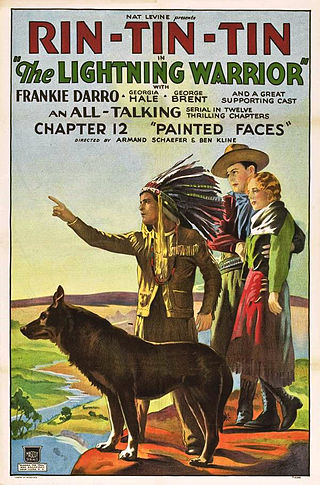
The Lightning Warrior is a 1931 American Pre-Code Mascot movie serial starring Rin Tin Tin in his last role. It is regarded as one of the better Mascot serials. A number of the production's outdoor action sequences were filmed on the rocky Iverson Movie Ranch in Chatsworth, California, known for its huge sandstone boulders and widely recognized as the most heavily filmed outdoor shooting location in the history of the movies. This was the original Rin Tin Tin's last movie, as he died in 1932, being replaced that same year by Rin Tin Tin Jr.

Mystery Mountain is a 1934 American Western serial film directed by Otto Brower and B. Reeves Eason and starring Ken Maynard, Verna Hillie, Syd Saylor, Edward Earle, and Hooper Atchley. Distributed by Mascot Pictures, Mystery Mountain features the second ever film appearance by Gene Autry.

Wheeler Oakman was an American film actor.
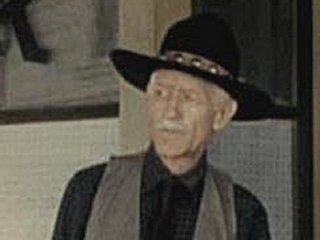
Earl Dwire, born Earl Dean Dwire, was an American character actor who appeared in more than 150 movies between 1921 and his death in 1940.

Jay Wilsey was an American film actor. He appeared in nearly 100 films between 1924 and 1944. He starred in a series of very low-budget westerns in the 1920s and 1930s, billed as Buffalo Bill Jr.

Harry Lewis Woods was an American film actor.

Victor Potel was an American film character actor who began in the silent era and appeared in more than 430 films in his 38-year career.
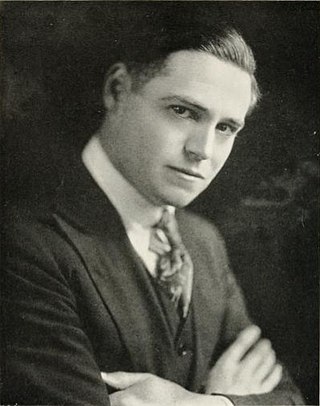
Guy Edward Hearn was an American actor who, in a forty-year film career, starting in 1915, played hundreds of roles, starting with juvenile leads, then, briefly, as leading man, all during the silent era.

Robert Donald Walker was an American film actor. He appeared in more than 200 films between 1913 and 1953. He was born in Bethlehem, Pennsylvania and died in Los Angeles.

Stanley Price was an American film supporting actor who appeared in over 200 films between 1922 and 1956. He was a charter member of the Screen Actors Guild.

Back in the Saddle is a 1941 American Western film directed by Lew Landers and starring Gene Autry, Smiley Burnette, and Mary Lee. Written by Richard Murphy and Jesse Lasky Jr., the film is about a singing cowboy who attempts to bring peace between ranchers and the operator of a copper mine whose chemicals are poisoning the area's water supply. The film features several of Autry's hit songs, including "Back in the Saddle Again", "I'm An Old Cowhand", and "You Are My Sunshine".

Riders of the Purple Sage is a 1925 American silent Western film directed by Lynn Reynolds and starring Tom Mix, Mabel Ballin, and Warner Oland. Based on the 1912 novel Riders of the Purple Sage by Zane Grey, the film is about a former Texas Ranger who pursues a corrupt lawyer who abducted his married sister and niece. His search leads him to a remote Arizona ranch and the love of a good woman.

John Hugh Elliott was an American actor who appeared on Broadway and in over 300 films during his career. He worked sporadically during the silent film era, but with the advent of sound his career took off, where he worked constantly for 25 years, finding a particular niche in "B" westerns.
